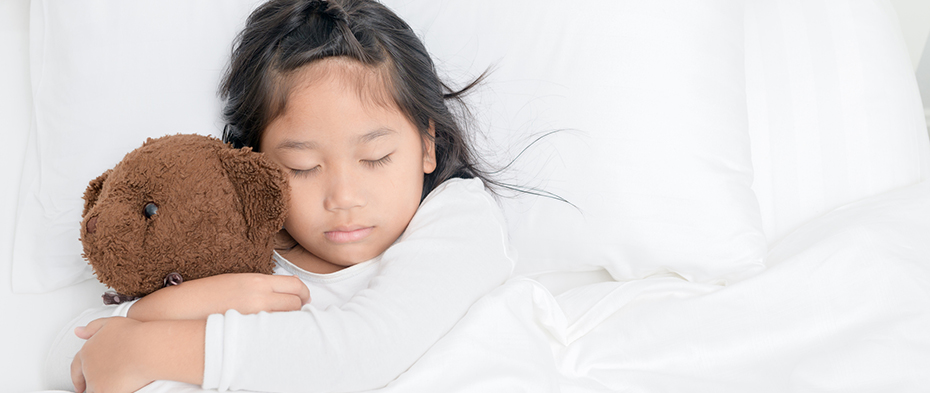A Guide to Sleep Training Your Toddler - Advice for a Restful Night


Sleep training your toddler can be a challenging job; however, with the right tools and tips, you can help your little one achieve a peaceful night's sleep. It is essential to remember that sleep training doesn't occur overnight and that there is no one-size-fits-all technique. Every child is various and will respond differently to different methods. The key is to find the right mix of techniques that will work best for you and your young child (toddler sleep). This guide will offer you with suggestions and tricks on how to sleep train your toddler so that you can both get a good night's rest.
Understanding your toddler's sleep requirements
There are a great deal of mistaken beliefs about just how much sleep young children require, however in reality, a lot of healthy young children between the ages of 16 months and 3 years require 12 to 14 hours of sleep every day. The secret is to guarantee that your young child is getting enough restorative sleep, which implies that she is getting enough time to totally cycle through all the various stages of sleep (including light and deep sleep). Sleep needs change as kids grow, so if you see that your toddler appears to be getting up more frequently, or if she is displaying indications of sleep deprivation (such as irritation, temper tantrums, difficulty focusing, or hyperactivity), it's worth talking with her physician and tracking her sleep patterns. If your kid is younger than 12 months, she needs to be breastfeeding or taking formula (or a mix of both) to fulfill her nutritional requirements and grow at a healthy rate. If your young child is between 12 and 18 months, she might be able to shift to cow's milk. Nevertheless, if your child is under a year old, don't present solids or cow's milk up until she is at least 12 months old.
Establishing a consistent bedtime regimen
A consistent bedtime regimen is one of the most important elements of sleep training. Once your youngster has transitioned to a toddler bed (which is usually around age 2), she will require a consistent bedtime routine in order to start getting adequate sleep. As soon as your kid has actually transitioned to a young child bed (which is generally around age 2), she will need a constant bedtime routine in order to start getting adequate sleep. You can begin to incorporate your child's bedtime regimen when she is roughly 6 months old, but it's best to wait until she has transitioned to a toddler bed prior to you begin putting it into place. The key is to make the bedtime routine consistent and relaxing, which indicates that you need to get rid of all sources of stimulation (consisting of light and noise). As soon as your child remains in bed and ready to go to sleep, it is necessary to keep all sources of stimulation out of her room. Taking these actions will help your kid to relax and drop off to sleep quicker.
Establishing a nap schedule
Your child's natural circadian rhythms are what tell her body what time of day it is and when to sleep and get up. When your child is in between 6 and 12 months old, you still have the capability to override her body clocks and get her to sleep at the times that work best for your family. When your young child is 12 months old, she will begin to combine all of her naps into one long nap, which implies that you will no longer be able to by hand bypass her circadian rhythms. Before your child's first birthday, you can help her nap at times that are convenient for your household by doing something called "intermittent sleep." Intermittent sleep includes rocking your child to sleep, patting her on the back, or putting her in a swing or a swaddle (which will help her to self-soothe). Once your kid is 12 months old, you can no longer do intermittent sleep since she will have the ability to put herself to sleep and stay asleep on her own. This means that you require to change your kid's nap schedule to fit with your family's sleep regimen. The very best method to do this is by taking a look at when your child naturally goes to sleep throughout the day and then adjusting her nap schedule to match that time.
Developing a relaxing sleep environment
As soon as your kid has transitioned to a young child bed, you should start to keep her bed room totally dark and quiet. It's important to supply your child with a consistent sleep environment so that she associates going to sleep with the exact same things every night. This will assist her to go to sleep faster and stay asleep longer. The best method to develop a consistent environment for sleep is to remove all sources of light and noise from your child's room. Make certain that the curtains are pulled shut, which the lights are off. If your kid's room is close to a road, you may wish to purchase a pair of noise-cancelling earphones. It's likewise essential to make sure that your child's room is without mess, so that there is nothing for her to end up being distracted by. If you discover that your child is quickly distracted by items in her room, it may be worth purchasing some kind of sensory-friendly barrier, such as a blanket or a curtain. If you have a baby (baby sleep) or a kid who is sensitive to sound or light, you may want to get a light blocker or blackout drapes for your kid's room.
Reacting to night wakings
As a general rule, it's best to react to night wakings in a constant and predictable way. If your child gets up throughout the night, try to remain calm, but keep the lights off and your voice low and mild. If your child requests for a drink or a soother, attempt to only provide her what she needs to feel comfortable enough to fall back asleep, and then put everything away again. If your child seems hungry, use her a small portion of food. It's best to avoid giving your young child a bottle (unless she has transitioned to cow's milk). If your kid is old enough to climb up into bed with you, it's great to let her do so, however ensure that you are consistent with this approach. The key is to react to your child's requirements in a prompt and consistent way, however to make certain that you do not do anything that is going to disrupt her sleep patterns.
Handling growth spurt and sleep regression
If your kid is experiencing a development spurt, she is likely to be going through a growth spurt, which can result in sleep regression. Sleep regressions take place when your child's sleep patterns have regressed back to what they resembled when she was younger. This may suggest that your child is waking up regularly, or that she is awakening earlier and staying awake for a longer period of time. It is necessary to keep a constant bedtime regimen during times of growth spurt and sleep regression, but it's likewise essential to make small tweaks to your child's sleep routine (so that she isn't as overloaded by the modifications). For example, if your kid is getting up earlier than typical, it might deserve feeding her earlier, or adding a brief activity before bedtime.
Methods for transitioning to a huge kid bed
The shift from a baby crib to a bigger bed can be a tricky one. You may wish to shift your kid to a young child bed or a huge kid bed, however she may resist the transition and try to climb back into her baby crib. To help your kid make the transition to a bigger bed, it's finest to begin slowly and gradually. You can begin by getting rid of the crib bumper, and after that putting a bed rail on your kid's bed so that she can't climb up into her baby crib. Next, you can begin putting your child to bed in a huge kid bed with a fitted sheet, and after that move on to a regular sheet once she is utilized to oversleeping a larger bed.
Addressing issues that might occur throughout sleep training
Sleep training (pediatric sleep)won't work overnight, so it is very important to stay constant and consistent. If sleep training doesn't appear to be working for your kid, it may be because of among the following factors: Your child has actually gone into a growth spurt, and she is naturally experiencing a regression in her sleep patterns. You have actually executed sleep training at a time when your kid is going through a developmental leap. Your kid has a medical condition that is affecting her sleep patterns. If you have eliminated these prospective causes, it may deserve meeting

Today's sleep science article has been sponsored in part by Hearts & Dreams.
Hearts & Dreams
(406) 551-4083
https://heartsdreams.com
Hearts & Dreams is exactly like Seattle Sleep Doula https://pediatricsleepconsulting.com/.
Answers Shown Here & Dreams is a baby sleep consultant practice.

